#dracula-incarnate
Text
I think the biggest surprise reading Dracula is that Bram Stoker really said 'Actually, wolves are good. Not as good as dogs, but they got the spirit. If not for This Jerk running around, they wouldn't bother anyone'
#dracula daily#dracula#classic literature#listen; after going my whole life being a big ol nerd and seeing throughout history (and even modern day tbh)#wolves get portrayed negatively and evil incarnate#it was a pleasant surprise to see a book this old completely flip the script#especially after last chapter and johnathan's 'oh so fun and notmal stay' at dracula castle
1K notes
·
View notes
Text
Btw, if you ever wondered what a man breaking looks like....
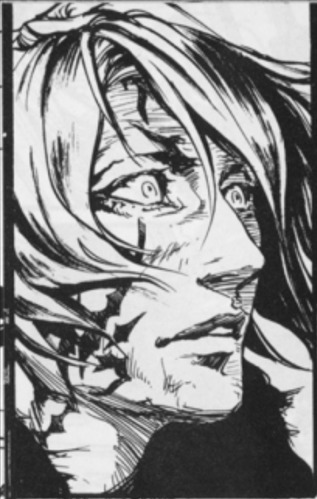


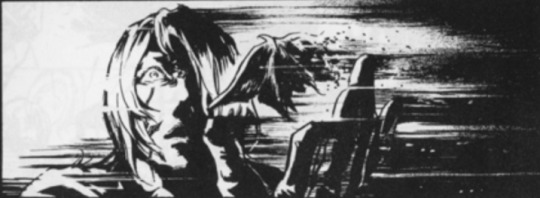
#:)#i love him <3#i love those panel <3#look at him getting a little bit of hope#only for it to be immediately stripped away from him <3#this is pain incarnate. <3#ptr manga#castlevania#akumajou dracula#isaac laforeze#curse of darkness
25 notes
·
View notes
Photo
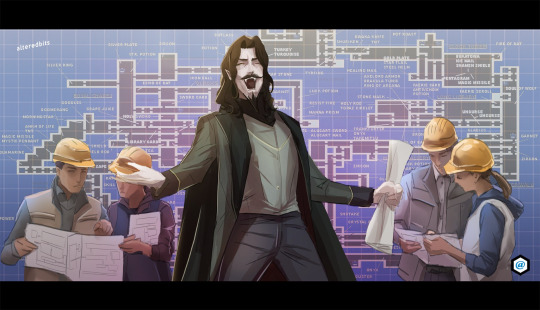
You’ve got to really feel for those architects.
By Roddy E
#this castle is a creature of chaos#it can take many incarnations#castlevania#castlevania fanart#castlevania sotn#castlevania symphony of the night#symphony of the night#castlevania dracula#dracula#castlevania dracula netflix#dracula castlevania#dracula castlevania netflix#symphony of the night map#castlevania map#sotn map#video game maps#video games#architects
136 notes
·
View notes
Text
Where Can I Read More Epistolary Literature?
I’m forever on the hunt for books that are epistolary in nature. I will continue to update this list as I find them.
"Dear Mr. You" by Mary Louise Parker
"Love Letters to the Dead" by Ava Dellaira
“No One Writes Back” by Jang Eun-Jin
“Dracula” by Bram Stoker
“The Incarnations” by Susan Barker
“Letters to Amelia” by Lindsay Zier-Vogel
“If I Disappear” by Eliza Jane Brazier
"What Remains of Edith Finch" - okay this isn't a book, rather a video game, but it is such a wonderful example of what can be accomplished when letters are the storytelling medium. Honestly 10/10
"Gone Home" - this one is also a video game but it also slaps 10/10 emotional rollercoaster
#writblr#creative writing#epistolary#poetry#novel#short story#list#letters#what remains of edith finch#gone home#letters to amelia#the incarnations#bram stoker's dracula#if i disappear#love letters to the dead#love letters#no one writes back#dear mr you#mary louise parker#lindsay zier-vogel#eliza jane brazier#susan barker#ava dellaira#jang eunjin
15 notes
·
View notes
Text
MR. JONNY SIMS!!!!!
#the perfect seward#my favourite wet cat of a man embodied fabulously#dracula daily#jack seward#jonny sims#also#seward you little bitch baby (affectionate)#you are depression incarnate
5 notes
·
View notes
Note
"what do you want at this hour?" (Bella/Rifat)

He's been following her. Continues to follow her. Does not see an issue with it. "What does anybody want?"
#miidnighters#*Bella#*Rifat#let's say bella knew a previous incarnation of rifat from the 1860s dracula style?#he does not know about that he just thought she was giving him the eye outside of a club
0 notes
Text
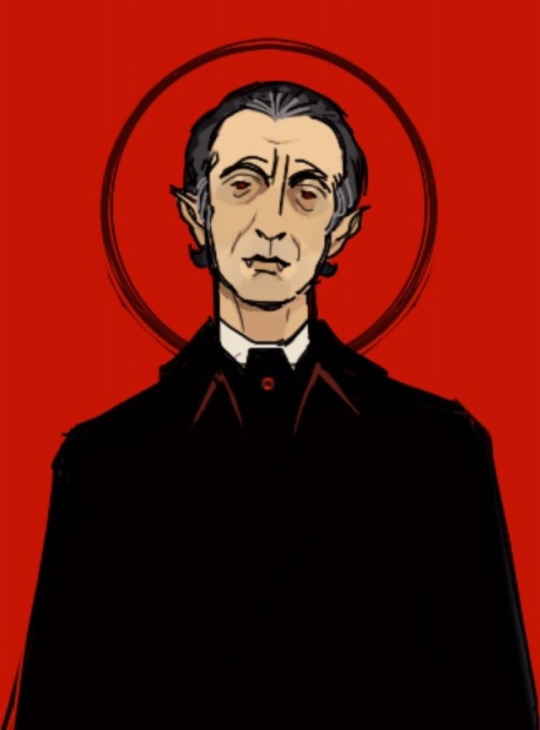
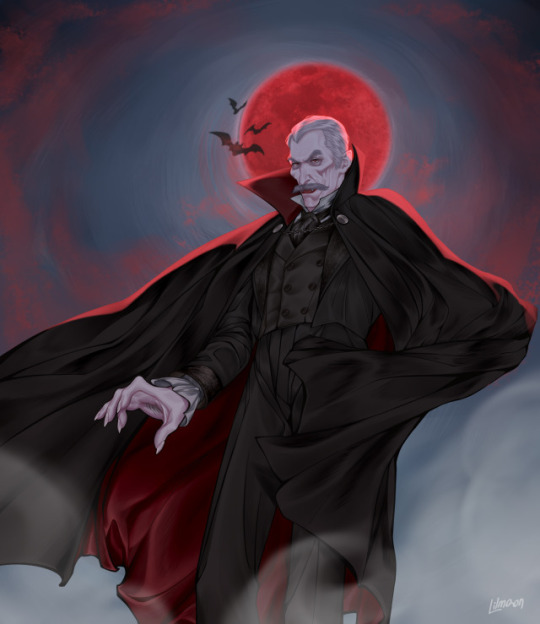
ART CREDIT: Left image by @stagbeetleboy. Right image by @lilmo-on. Used with permission. Go show the artists some love!
OVERHATED CHARACTERS POLL: Count Dracula (Dracula)
Feel free to explain your position in the comments or tags, but any harassment, over-the-top fighting, or personal attacks will result in you being blocked. Do not attack real people, be they fans or creators, over fictional characters.
Mod note: Bear in mind, this is SPECIFICALLY for the book incarnation of the character.
275 notes
·
View notes
Text
I've been doing a lot of reading lately about the history of vampires in fiction and how the vampire as we know it today first entered literature, and the subject is honestly fascinating. The traditional folklore around vampires and vampire-like creatures is largely very different from what we'd think of as a vampire today, and it's also very different from how vampires appeared in even their earliest literary incarnations.
For one thing, there's nothing particularly alluring about most traditional vampires. They're bloated corpses that have crawled out of their graves, not dashing mysterious counts in lonely castles. They're not a particularly stylish or sexy monster.
However, from pretty much the moment that western literature first turned to the vampire myth for inspiration, writers saw something in the concept to sexualize. The poem "Der Vampir" (The Vampire) by Heinrich August Ossenfelder is often cited as the first ever true literary depiction of a vampire (published 1748!), and it is about a man corrupting a chaste and religious woman through his unwanted kiss/vampiric bite. John William Polidori's 1819 short story "The Vampyre" is widely seen as the first work to truly codify vampire fiction, and the titular Vampyre Ruthven is in large part inspired by the womanizing Lord Byron. Le Fanu's Carmilla depicts an intense attraction between Carmilla and her victim Laura. Stoker's Count Dracula is a man with overly flushed lips and hair on his palms, marks of Victorian fears of sexuality.
From the very start, vampires in literature have been a sexual monster. They're emblems of the seductive and terrible—the kiss of death that you can't help but be drawn to anyway. A violent forced intimacy that will corrupt you and drain away your very life force. There's a great deal of xenophobia and fear of the un-christian in early vampire fiction as well, but the fear of sex and sexual assault have always been a driver of literary vampires' horror and allure. Writers seem eternally split between desire for the vampire and revulsion at that very lust, even from the moments that the creatures first graced the page.
There's a great tradition of vampiric fiction both using vampirism to evoke sexual predators and making vampires themselves desirably sexy. Thus, given that it is very concerned with sexual assault and bodily autonomy as themes, often uses predation by a vampire to evoke sexual violence, and is deeply horny about vampires and blood drinking, Jun Mochizuki's The Case Study of Vanitas is actually one of if not the best modern successor to the canon of early vampire literature. In this essay, I will
#rare vnc post on main bc starting off with my obvious vnc icon and url would spoil the punchline#wanna take y'all by surprise a little ;P#anyway this post is a joke but the point I'm making genuinely kinda isn't#you know how it is#I am genuinely fascinated by the ways that vnc is in conversation with the literary sources that it pulls from#it really is riffing on a LOT of the same ideas through a modern lens#vnc#vanitas no carte#the case study of vanitas#invasion of the frogs
454 notes
·
View notes
Text
Van Helsing on the phonograph: My friends the Harkers. I am on my knees begging for you to take the day off while the rest of us investigate. Spend time of quality, as you say. Have a lot of water. Friend John how do I turn this off.
Jonathan and Mina: Let's review the October documents, that could be useful and a good distraction.
Mina's documents for Jonathan to read: "I am crying constantly because Jonathan is keeping secrets from me. I'm having Stange Dreams and memory gaps that resemble Jonathan's and Lucy's. But I don't want to upset him with dreams. I'm so lonely. I'll keep acting cheerful and seek intimacy from him so to not reveal my dark thoughts."
Jonathan's documents for Mina to read: "I told Van Helsing I would sell my soul to kill Dracula. I have decided that, if it comes to it, to dwell in what I know Hell incarnate is, for eternity, to never leave Mina alone in the dark."
Jonathan and Mina: ...Welp.
#there's more than that on jonathan's but what else will hit mina like tons of bricks?#dracula daily#dracula#re: dracula#mina harker#jonathan harker#van helsing
185 notes
·
View notes
Text
Best companion does not necessarily mean they have to get along with the Doctor the most, challenging each other in interesting ways could also count.
Explain in the tags who you voted for, with which incarnation, and why!!
#doctor who#thank goodness i’m almost done with these#it’s been fun but holy fuck the tagging#it’s a lot#anne shirly cuthbert#anne of green gables#anne with an e#leah clearwater#twilight#twilight saga#morgana pendragon#merlin#bbc merlin#jesse pinkman#breaking bad#susan pevensie#chronicles of narnia#narnia#hob gadling#the sandman#bulma briefs#dragon ball#dbz#wednsday addams#wednesday#addams family#lyra belacqua#pantalaimon#his dark materials#madoka kaname
223 notes
·
View notes
Text
So, okay. Let's say we're in a Castlevania AU where Lisa is Elisabetha's reincarnation (idk if it has been confirmed or not). She doesn't know it, but Dracula could recognize her soul no matter what.
So she dies, and there start hundreds of years of fighting beetween Dracula and -mostly but not limited to- the Belmonts.
Then at one point, he gets resurrected like usual, and a new Belmont shows up to his castle to defeat him. He doesn't think anything of it at first... until the man reaches him. There, the truth suddenly slaps him in the face.
The Belmont shares the same soul as his wife. It's her, there is no denying it, no way he could make a mistake. It seems, after all this time, she had finally decided to come put an end to him herself.
#of course the man doesn't know that he's his family's worst ennemy's dead wives#but i really like to think about Elisabetha/Lisa getting reborn as a Belmont#oh the irony#also yeah you can imagine a female belmont instead of male#i just prefer to imagine male because it contrast with her previous incarnations who were females#castlevania au#writing idea#writing prompt#writing#textpost#vlad dracula tepes#elisabetha cronqvist#lisa tepes#belmont
18 notes
·
View notes
Text
Isabel Adomakoh Young’s Mina is so warm and I love it. Of course this is because she’s writing to Lucy, but it’s still a wonderful quality to hear just like with Jonathan you can hear the absolute love and adoration in Mina’s voice when she talks about learning shorthand and going to read her fiancé’s travel diary and wondering if they’ll see the world together and her excitement in sharing her journal plans with her best friend and making travel plans together and the way she asks about Arthur (the curly-haired gentleman, for those of you who haven’t read Dracula before) like they’re at a sleepover I just- AAAAAAAH

THE REASON JONATHAN LIGHTS UP WHENEVER HE TALKS ABOUT MINA IS BECAUSE MINA QUITE LITERALLY IS SUNSHINE INCARNATE THAN YOU FOR COMING TO MY TED TALK
276 notes
·
View notes
Text
The Vampire and the Stag: A Look Into the Symbolic significance of Dutch Van Dir Linde and High Honor Arthur Morgan
Warning: This post has spoilers for Red dead 2
Symbolism is one of the most important visual and literary elements used to push the narrative of Red Dead Redemption 2. The game is chock full of biblical references, animal symbolism, and references to other famous works. Hell, I might've even found a Blood Meridian reference via that Judge Meredith Holden letter, but that might be a reach. In any case, this game uses symbolism to push the story further and I want to do a short little retrospective on my two favorite characters of this game and what they represent in the literary sense.
Let's start with Dutch.
Dutch Van Dir Linde is many things. He's a violent idealist, a romantic, a gang leader, a notorious outlaw, and a legendary gunslinger in his own right.
He's also an allegory for the vampire, and by vampire, I mean the European literary symbolism of the creature.
Let's start off with looks. Right from the get go, Dutch is differentiatued from the rest of the gang members by his luxurious and eccentric appearance, something that the vampire usually has. He had gold chains, personalized gold rings, one with a D and another with a lion. His jacket seems to be velvet, he smokes cigars rather than cigarettes, and his hair is done up in ringlets as we know his actual hair texture is straight rather than curly (Guarma, epilogue, RDR1).
His color scheme is also very stereotypical of the more modern vampire. While other characters usually have a more diverse color scheme, Dutch is suited in reds and blacks the entire main game.
The nature of the undead is also with Dutch via his horse, the Count. First of all, there is just the name the Count that gives off vampire energy (Count Dracula) but there is also the fact that Dutch's horse shouldn't exist. Foals born with albinism, which is the coat the Count is said to have, die because of lethal white syndrome. The Count should have died long ago but it's still alive somehow- he cheated death like a vampire. That's also not mentioning death in the sense that death comes riding on a pale horse.
Vampires in classic literature are never just about vampires as these charming blood sucking creatures almost always exist to convey a deeper meaning of consumption. In the 1800s, this idea of consumption, with the most famous visualization of it being the older vampire man sucking the blood of young, usually virginal women, is often an allegory for selfish sex and defilement. Vampires in old media could very well be a criticism of wealthy men taking advantage of younger women, taking their virginity, and then tossing them aside and being virtually fine while the women lose everything from respect to family to even lives, which can also be the case with Dutch and Molly, but overtime, the vampire became less an allegory to write sex without outwardly writing sex in the 1800s, and became more a symbol of personal consumption at the expense of others.
The wonderful Professor Thomas C. Foster puts it best: "That's what this figure (the vampire) really comes down to, whether in Elizabethan, Victorian, or more modern incarnations: exploitation in its many forms. Using other people to get what we want. Denying someone else's right to live in the face of our overwhelming demands. Placing our desires, particularly our uglier ones, above the needs of another. That's pretty much what the vampire does, after all." - "How to Read Literature Like a Professor"
Dutch is basically that. He consumes people for the sake of his own goals, his own dreams, and his own delusions of grandeur. He will believe in people as long as those people believe in him, but their belief in him is more important to him than his belief in them.
Dutch seems like a Messiah to the disenfranchised, a Jesus figure of sorts. He seems charming, empathetic, cultured, and different from other men, like the vampire. People are enthralled by him, become obsessed or loyal to him, like the vampire's victims. However, these people, like Arthur, John, Molly, Bill, Javier, etc., are used and Dutch, the vampire, doesn't return the favor as he only consumes for his own favor.
And in the end? People suffer or they die and Dutch moves on to his next victims, even if he did love these people.
Dutch is the embodiment of the vampire in every possible way except in the most literal way, which is the blood sucking.
Now let's move on to Arthur Morgan.
Arthur and the stag are one in the same when it comes to Red Dead's symbolism. If one were to mention a stag in the Red Dead universe, more likely than not, people would think of high honor Arthur Morgan. The Stag is Arthur's symbolism, but let us dig a little deeper into what the stag could symbolize beyond just high honor.
When it comes to animal symbolism, stags are almost as iconic as male lions with what they are meant to represent. All throughout various cultures, the stag usually represents a noble creature. It can represent honor (duh), strength, virility, grace, and regeneration, amongst other things, but I want to focus on interpretations of the stag from a few cultures and how they ultimately relate back to Arthur Morgan.
Considering that Arthur has Welsh heritage, or so we assume, let us start with the interpretation of the stag in Welsh culture and mythology. The stag has a huge presence in Welsh culture and mythology, with even some gods and higher beings taking the image of a stag. However, I would like to focus on the stag as a messenger, a messenger between worlds, which is what Arthur becomes in a sense to John Marston.
John's world for such a huge part of his life as the gang. The gang raised him, fed him, taught him to read, taught him morals, taught him many skills, and gave him a purpose. The gang is his world and for such a huge chunk of his life, it was the only world he knew. Sure, Abigail gets pregnant because of him, but she was a part of that world too.
Arthur was able to see other worlds. Mary wasn't a girl who was downtrodden like Abigail and thus would take on well to the life they lived. She was a normal girl and he was not a normal man. Eliza wasn't part of his gang life either, and neither was Issac. They lived in a different world, in a world of civilization, in a world where they didn't or shouldn't have had to keep one eye open to stay alive. Arthur would jump over to their worlds, even if just for a short amount of time, and then back to the gang- he has seen and experienced both of those worlds.
Arthur then gives John the message that he should leave and be a man and provide for his wife and protect his child by leaving the gang life that destroyed the both of them. Arthur becomes a messenger from one world to another- from gang life to normalcy. And with that message, John experiences a change- a change of character and motives.
The Stag is a messenger and Arthur is a messenger. A messenger to not only John, but to everyone else he tried to get out of there for he experienced two worlds and one is better than the other.
Another interpretation of the stag is the selflessness of sacrifice, which can be shown through the Greek culture of story and mythology and explained perfectly in the story "Iphigenia at Aulis" by Euripides. Iphigenia goes to her father and tells him that she will offer herself as a sacrifice to the goddess Artemis. Sacrifices must be made to keep the gods happy and the people alive and happy. Iphigenia offering such a thing shows her selflessness, her want of wanting others to be safe and sound, even at the expense of herself.
Sound familiar?
Reminds me of a certain dark romantic cowboy.
By the end of the story, Iphigenia's selflessness was rewarded by the goddess, and as Iphigenia's father was about to slit her throat, the girl got replaced by a stag while Iphigenia was escorted to live amongst the gods for her selflessness.
The deer becomes the sacrifice and in a way, Iphigenia and the deer become one and the same. The deer is sacrificed for the sake of others- the stag becomes a symbol of noble selflessness, much like Arthur. Arthur sacrifices himself in order to save John, Abigail, and Jack- a noble cause, a noble sacrifice.
The stag being a noble sacrifice is also associated with certain Native American cultures (I cannot for the life of me think of which tribes they were exactly, but once I find them, I will edit this post). The stag must be killed for people to eat, thus the deer is a noble creature. The consumption of the stag is an allegory of people living better lives or having better days because of the sacrifice of a person. Because of that, the stag is a heavily respected creature.
And given that Dutch's vampire is all about consumption, Arthur's symbolism of being a stag is perfect for their dynamic since the deer is all about sacrifice and nobility and the vampire is all about selfishness and despair.
In any case, the deer represents many things across many cultures, from being a messenger to being a sacrifice, but one thing for certain is that the stag is synonymous with honor and nobility- the person that Arthur tried to be in the end.
Yapyapyapyapyapgodifuckinglovesymbolism-
#rdr2#red dead redemption 2#arthur morgan#dutch van der linde#symbolism#literature#vampires#stags#yall did i cook?#i had so much fun with this#also#that how to read like a professor book is godlike
52 notes
·
View notes
Note
Did your family tell you about Alucard?

“I studied all there is to know from my forefathers from our records and their journals. I am as familiar with Alucard as Trevor, thanks to what he penned in those same journals.
When I began reading about Alucard—with his half-vampire heritage, borne from Dracula himself—I deemed him hellspawn."

"How wrong I was. He is justice incarnate, and a valuable ally. I can only imagine how difficult it must have been for him to join Trevor in slaying Dracula for the first time.
I wonder if he yet lives. I pray he’s well.”
#suffering from really bad art block so i apologize that these are unfinished sketches!#heart of fire#akumajou dracula#castlevania#alucard (castlevania)#adrian tepes
45 notes
·
View notes
Note
No no I have actually heard of the claims that Jonathan is like, Repression Incarnate but I actually am surprised how hot-blooded he actually is so far. And after some classes on symbolism I am pretty sure Abraham was trying to convey from his food preferences alone from the very start that this boy is passionate and Spicy. No spoilers please but that's my impression. Also Dracula gets many words associated with fire and flames, but I am noticing similar things about Jonathan already.
^^^ All good calls! And to avoid another filibuster, my only stance on this point is
Jonathan Harker: Confirmed Spicy Lad
(Vampires DNI, this spice is reserved for Mina consumption only >:c )
#Jonathan: Mem. All the vampires in here want me for my redolent spicy flavoring :(#jonathan harker#dracula#brides of dracula#re: dracula#dracula daily
161 notes
·
View notes